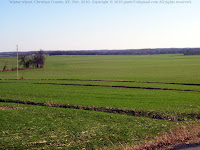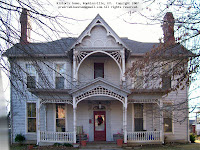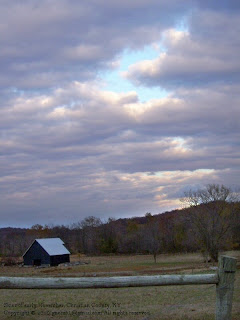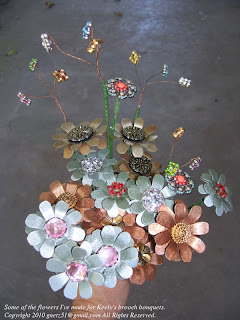Snowy Christmases, past and present
We had a white Christmas in Christian County this year. The snow started about 6:00 pm on Christmas Eve and continued intermittently throughout Christmas Day. This photo was taken in late afternoon on the day after Christmas.
Keely, Taurus, and their friend Adam spent Christmas Day with us. After they left that evening, I swept several inches of snow off my car so it would be ready to drive in the morning. A couple more inches of snow fell during the night, and when I went out to start my car the next morning, I had to sweep it off again.
My kids have a favorite family story about one of the few Christmas snows in their childhood. We went to church on Christmas morning that year. By the time church was over, several inches of snow covered the ground. We were surprised! We didn't know that snow was in the forecast!
I was driving, and I had no problems until I turned off the highway to the little gravel lane that leads uphill to our house. I made it about halfway up the long, hill before the car started to slide. When I let up on the gas, I lost momentum and came to a stop.
Dennis got out and pushed the car. That wasn't successful, so he decided to drive while I pushed. I got behind the car and gave it all my muscle while Dennis stepped on the gas aggressively. When he got the car moving, he roared up the hill, leaving me to walk home. The kids didn't know whether to laugh or cry about leaving Mom behind, but I understood. If he had stopped, we'd have gained nothing.
Several days before Christmas in 2004, we had the closest thing to a blizzard that I've seen in Kentucky -- seven or eight inches of snow with strong wind and very cold temperatures. Dennis was in Kuwait that Christmas with AAFES (the PX system, from which he has now retired), so he missed out on that storm.
We always heat with wood, but normally, we have a thermostat-controlled propane heater that turns on when needed. During that storm, we had only wood heat. We had bought a new propane heater a few days earlier. After the installer disconnected the old heater, he realized that he didn't have everything he needed to connect the new heater.
That night, while I was shoving firewood into the stove and listening to the wind howl, I thought about Laura Ingalls Wilder's blizzard story in On the Banks of Plum Creek. Pa and Ma had gone to town, leaving Laura and Mary at home with little Carrie. When the blizzard hit, Laura knew that it was important to have lots of firewood inside. Otherwise, people had to burn their furniture to keep from freezing. With fear-driven energy, Laura and Mary hauled the entire woodpile inside their little cabin, finishing just as their parents arrived home.
Isaac's longtime friend DJ was home from Oregon that Christmas, and he was visiting us on the night of the snowstorm. The next morning, the storm had ended, and it was clear, cold, and still. Isaac and DJ bundled up and went out with the sleds.
I didn't know that they were sledding down the hills on the highway until they got back home! "We'd have heard any cars coming!" they assured me with the wisdom of 15-year-olds. I felt a little better when they told me that there were only two sets of tire tracks on the highway.
A day or two later, the snow was still on the ground and the roads were still bad. Keely got a ride home from Murray on Christmas Eve with her friend Kyla who had a Jeep. A tall fellow named Taurus crawled out of the Jeep with Keely and spent that Christmas with us. He's been here for every Christmas since then, and in October of 2010, he became our son-in-law.
I hope you've enjoyed your Christmas, white or otherwise. And if it's snowy where you are, stay warm and be careful!

















































